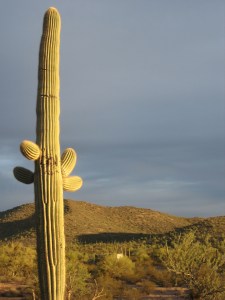
The Man and I have been talking about buying land in New Mexico since the day we met. (Literally.) It looks as if it’s finally going to happen.
A friend of ours has owned land in southern New Mexico for over a decade. The land is isolated, and our friend is in her mid-70s, so her kids really don’t want her out there alone. She made us a good deal on the half acre, and we plan to be out there early next month.
At first I thought we should haul the fifth wheel out there with us, but then we started thinking about costs. The fifth wheel would need new tires, and The Man said the bearings would need to be repacked (whatever that means). We were going to have to ask a friend with an old truck that can pull a fifth wheel to haul ours, which would mean paying for his gas as well as our own and offering him a couple hundred bucks for his trouble. I quickly realized we were better off selling the fifth wheel and living in our vans on the property for the next couple months, then building some simple living spaces in the fall.
We reached similar conclusions about the solar set-up and the storage shed. Potential buyers of the fifth wheel would want electricity and a place to store their extra things. The place would be easier to sell with the amenities. Besides, where would we store the six solar panels (and three deep-cycle batteries) while we were away from the land in the summer? How would we fit the shed’s metal panels in my van (in addition to all my belongings) to transport them to our new place? It made more sense to leave those things behind and use the money we got from the sale to buy new things. I’m looking forward to a solar set-up on my van (!!!) and a new shed on the property.
I’m also looking forward to saving a lot of money in New Mexico. Gone will be the days of rent. Sure, the $550 I pay to stay in the desert RV park is nominal, but $550 is $550. I’d rather not pay it if I don’t have to. Taxes on the land are cheap, so I’ll be saving most of that yearly expenditure.
We haven’t looked into car insurance yet, but we suspect it’s going to be a lot less expensive than what we’ve been paying in Arizona. A close friend told me her insurance rates dropped dramatically when she left Arizona and changed her domicile to New Mexico.
Perhaps most importantly, we’re only going to be about 15 miles from a town with a real supermarket. Where we are now, we can drive 10 miles to a town with a small grocery store, or we can drive more than 85 miles to a city with real supermarkets. The store in the small town charges two to three times more than the city supermarkets charge. In our new place, a 15 mile drive will take us to affordable food and inexpensive ice and a public library and three thrift stores and a big hardware store and and and…

Of course, New Mexico is where The Man and I want to be. I’ve grown to appreciate Arizona, and I’ve grown to love the Sonoran Desert (those saguaros!), but I’ll be super happy to be in New Mexico again, to have a yellow license plate, to experience the Land of Enchantment morning, noon, and night.
I took the photos in this post.





















